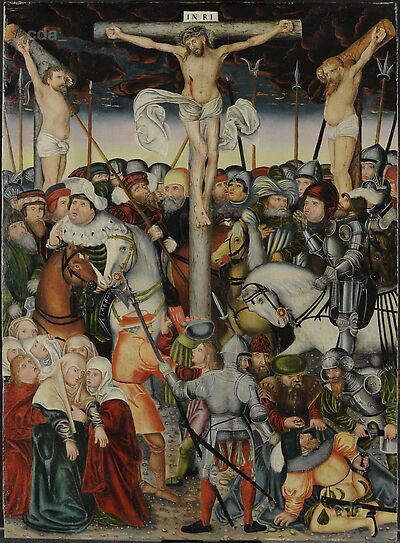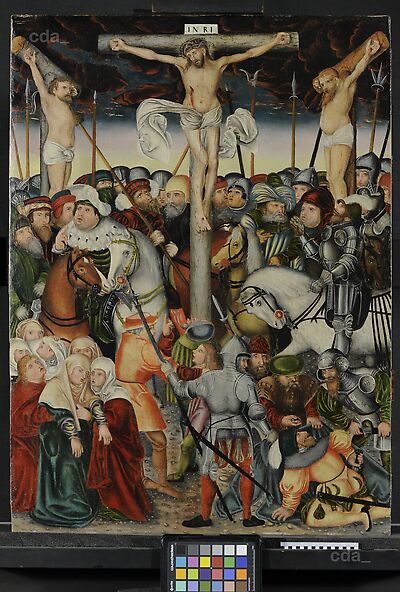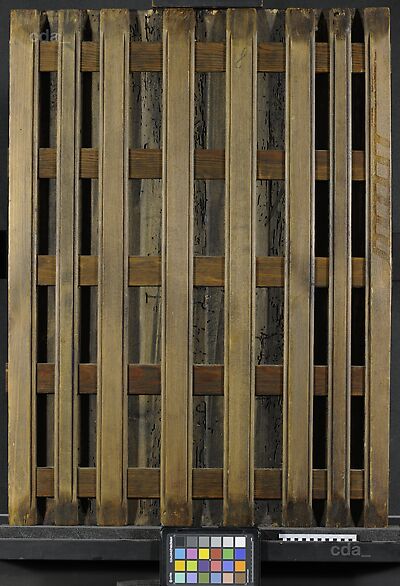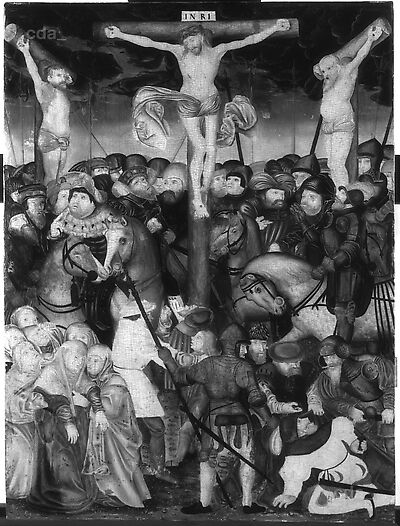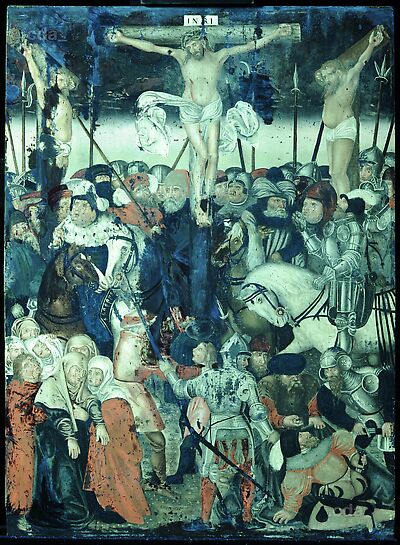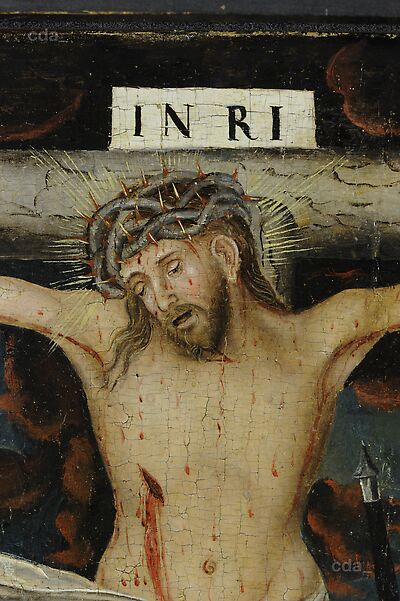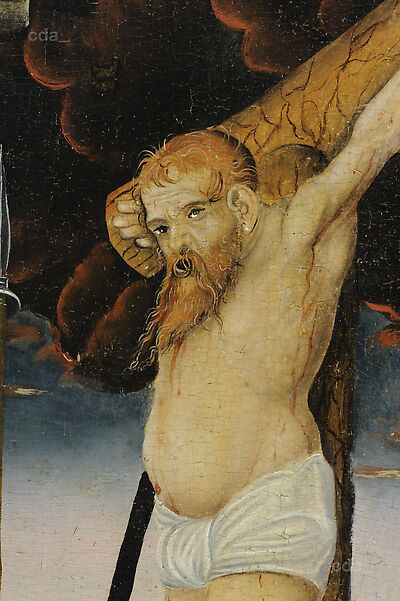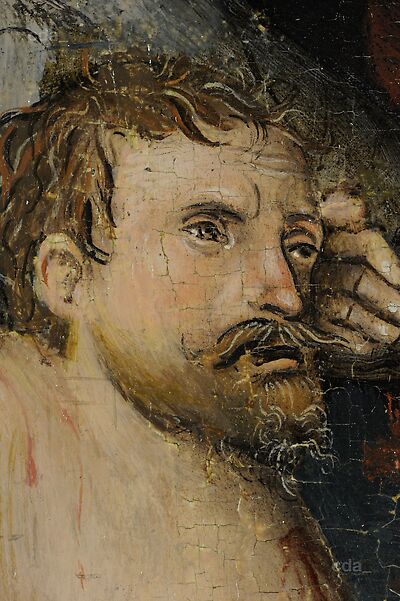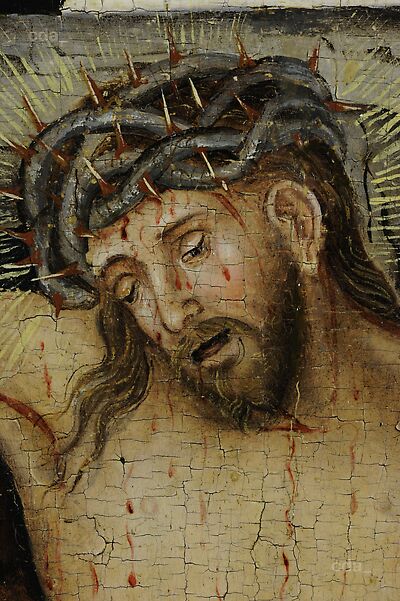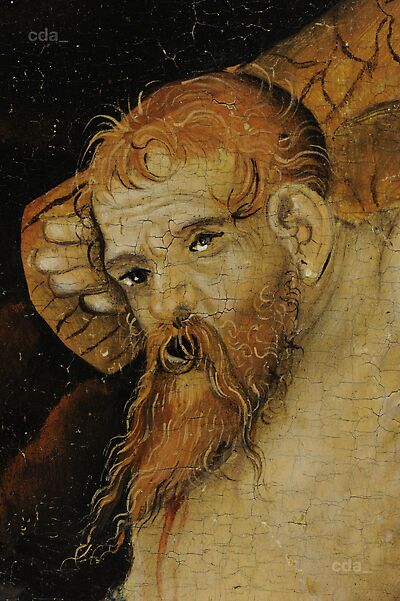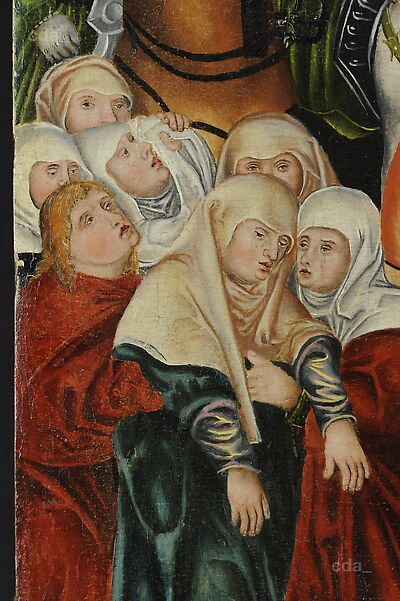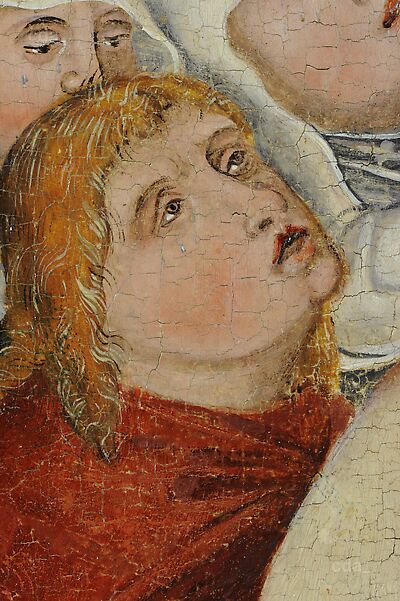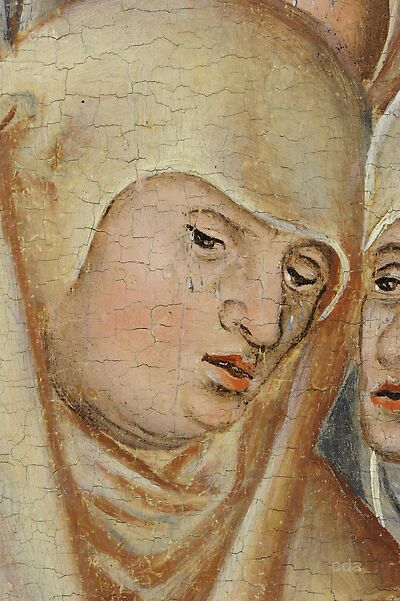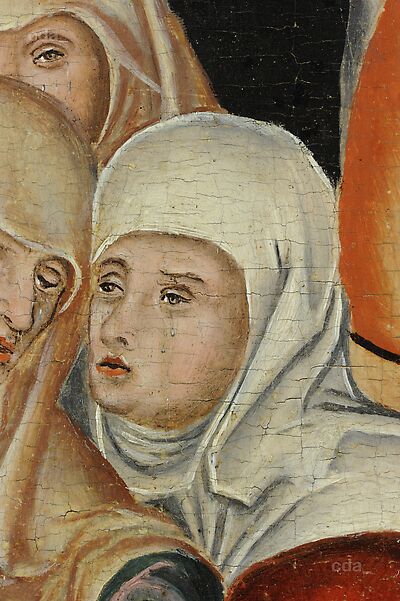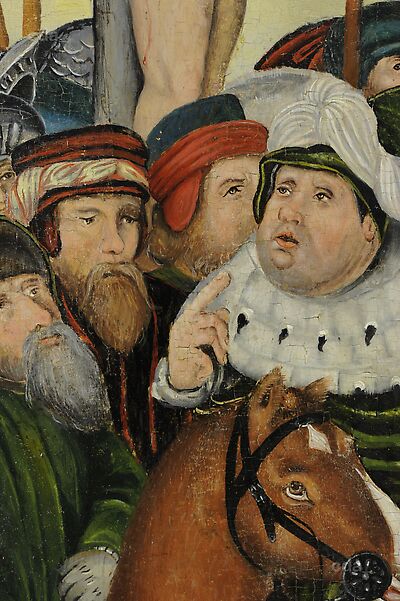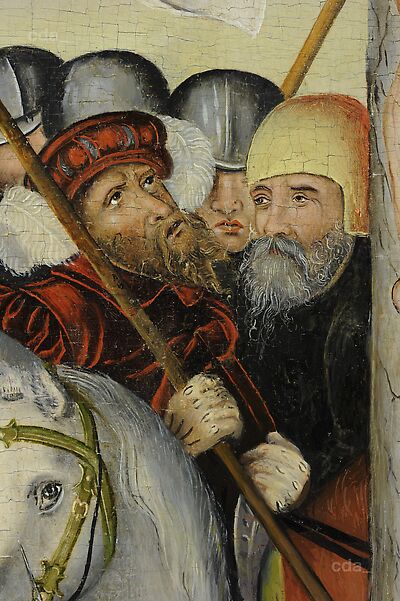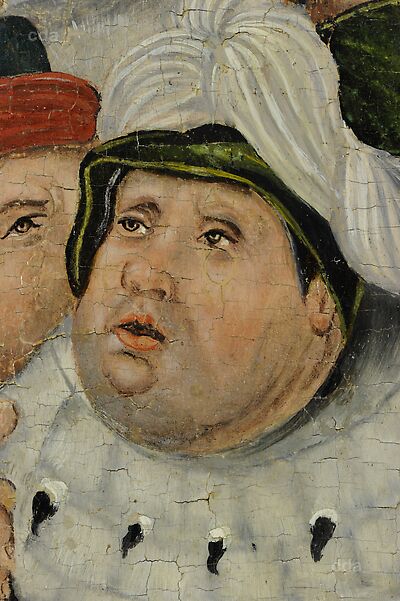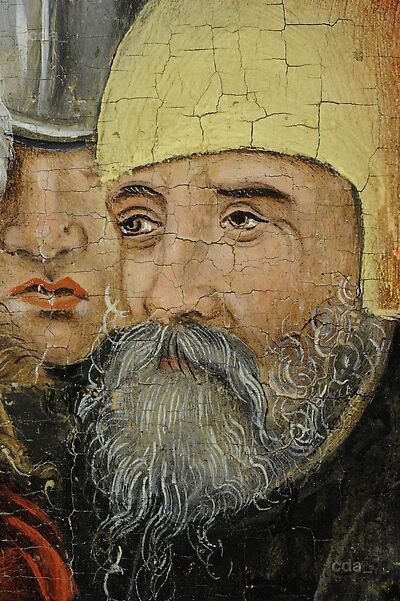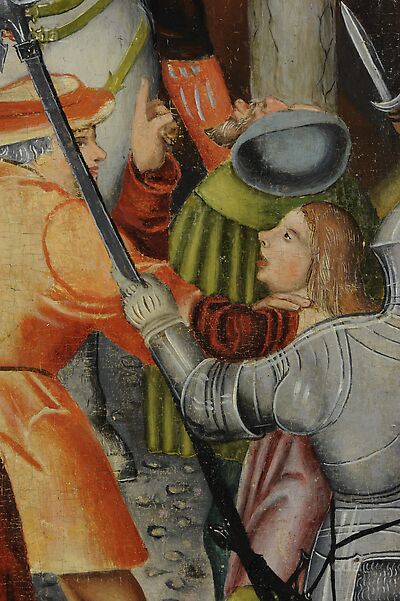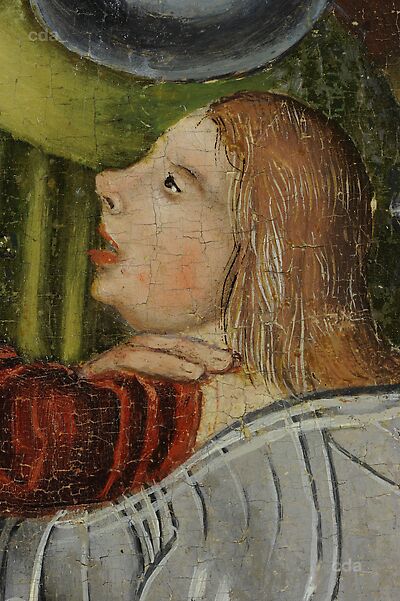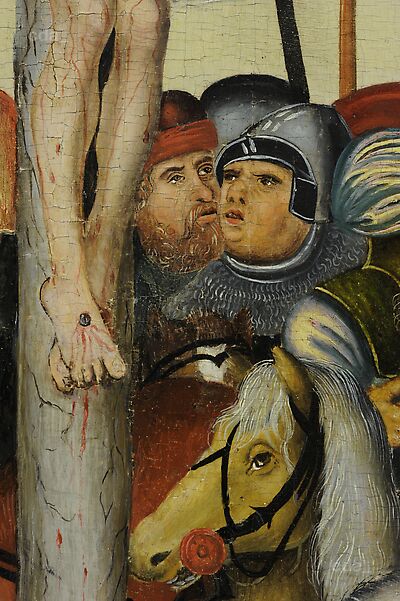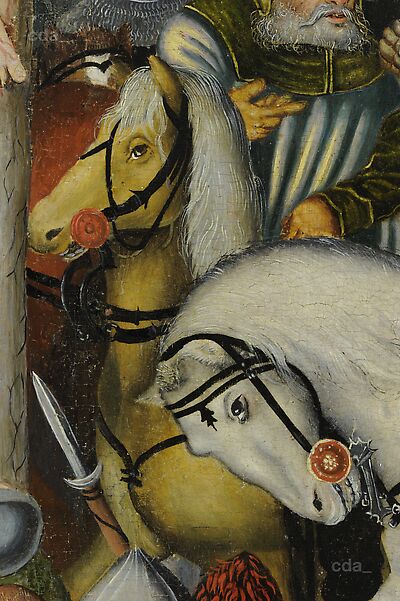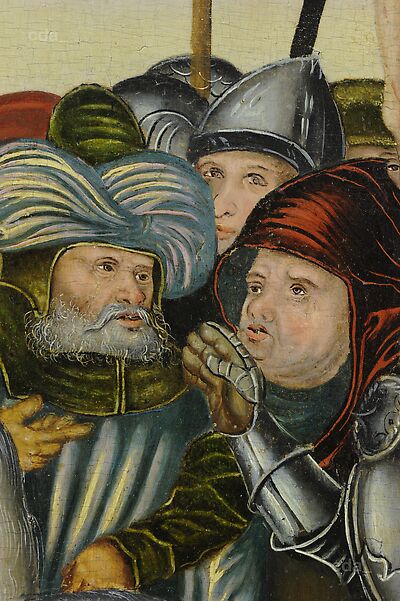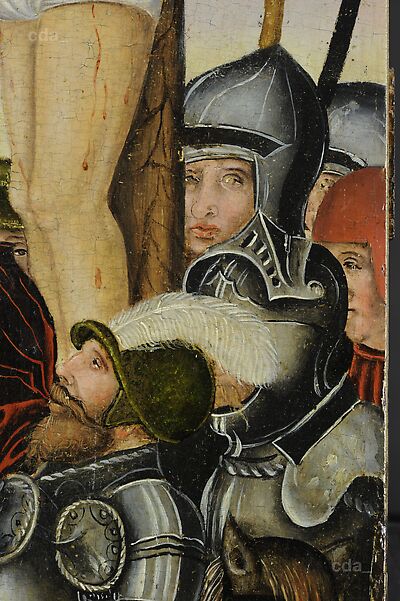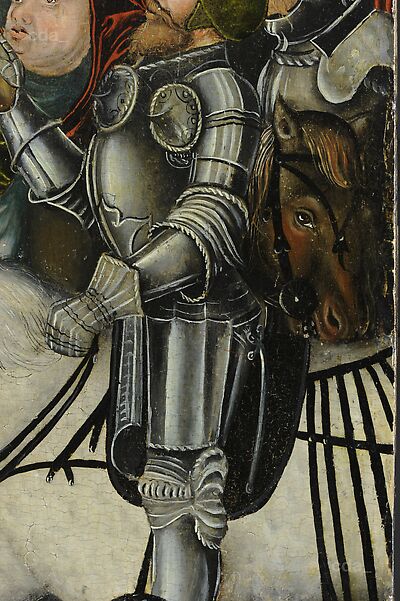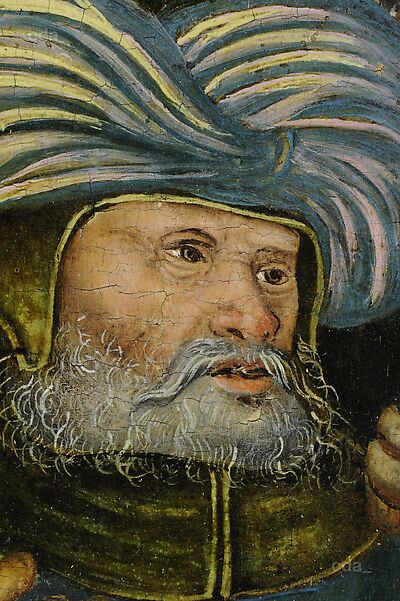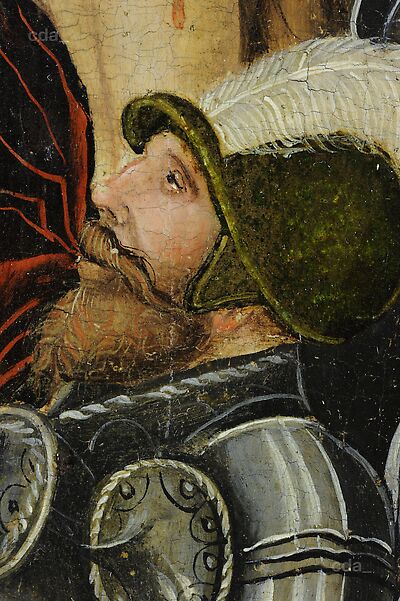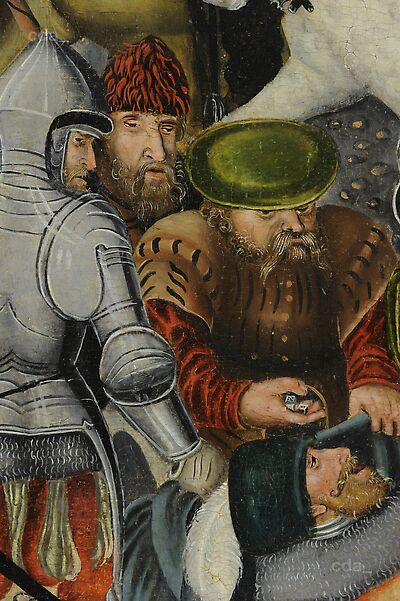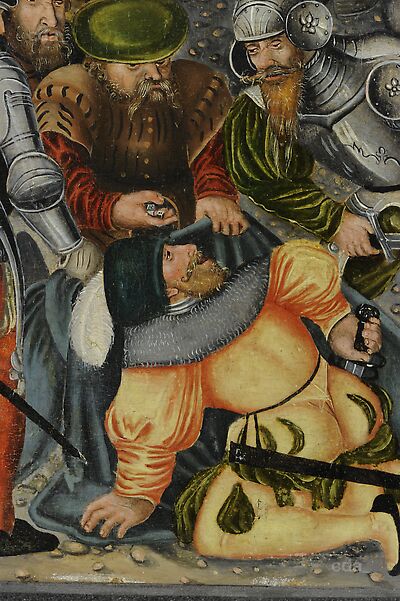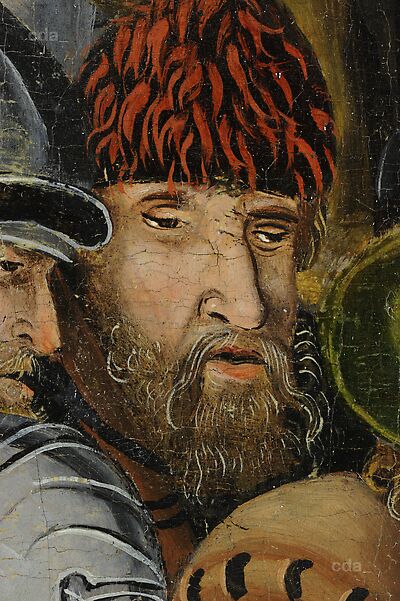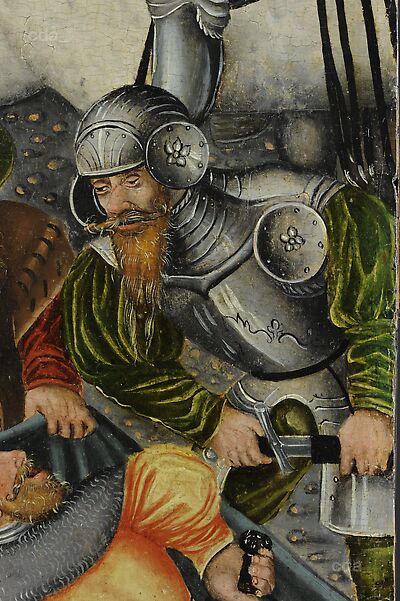Support
Methods employed: stereomicroscopy (digital microscope Keyence VHX 600); infrared reflectography (OSIRIS, 900-1700nm); x-radiography (digital image); UV-light; identification of wood species
- the panel consists of a number of vertically aligned lime wood boards, with glued butt joints
- the joints were not reinforced in any way
Ground and Imprimatura
- white ground [Sheldon report: natural chalk with coccoliths] extending over the entire surface of the panel
- a barbe is no longer visible
- a lead white imprimatura was identified on cross-sections [Sheldon report]
Underdrawing
- an underdrawing was not visible in the infrared reflectogram
- under the stereomicroscope red lines were identified beneath the paint layers, which suggest the use of red chalk
Paint Layers and Gilding
EDX analysis allowed identification of the following pigments: lead white, chalk, azurite, verdigris, vermilion, red lake, lead-tin-yellow and carbon black. Cross-sections showed a lead white imprimatura. [Sheldon report, 1999]
Underpainting
Examination under the stereomicroscope, complemented by the infrared reflectogram and the x-radiograph showed that the sky and certain garments were initially laid in using varying tones of grey paint. A complete grisaille-like underpainting could not be found.
Flesh paint
A pale admixture of lead white and vermilion was used to paint the faces and shadows; modelling was added in grey or semi-transparent brown glazes; highlights were applied in a paler flesh tone. The x-radiograph shows this relatively systematic approach. The black contours of heads and eyes appear to have been applied with confidence unlike some of the painted passages.
Drapery
The red velvet head attire of the man below the thief on the right and the robe of a man to Christ's left both exhibit a black underpaint, modulated with vermilion and drawn together with a red glaze. In contrast the red robes of St John and one of the women were initially painted using vermilion. The folds were then given depth using black and red lake. Other garments shimmer between yellow and red. The shirt of the boy beneath Christ exhibits a grey underpaint, modelled with red lake. The blue shot silk turban of the horseman on the right was created employing a combination of azurite and pink (lead white, red lake) with yellow highlights. The green robe of the horseman at the left edge was underpainted in grey and modulated with opaque green and green glazes.
Sky
An azurite layer was applied over the grey underpaint, then blackish-red clouds were added. Towards the horizon these become lighter with an application of pink (lead white, red lake) and yellow (lead-tin yellow).
The x-radiograph confirms that the paint process was planned from the beginning, with some forms held in reserve and no significant changes.
[Heydenreich, unpublished examination report, 28.02.2012]
